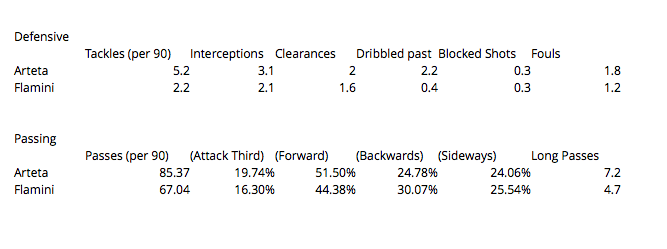In last year’s edition of the Indian Premier League (a cricket tournament which brings together the best players from around the world to play alongside stars of the domestic game), 4 out of the 8 teams did something almost unheard of in sport: they dropped their captains. In cricket that’s a big deal as captains do everything from establishing a code of conduct, to being the eyes of the coach on the field. In football, there is a similar mystique about the captain’s armband – that it is not merely a cloth but deifies the person that wears it. Except last season, Arsenal too went against that standard and dropped their captain. And their fortunes turned for the better.
In a way, Thomas Vermaelen was scapegoated for Arsenal not finding any consistency defensively for three-quarters of the season. Wojciech Sczcesny was also dropped from the side but only for a period, but Lukasz Fabianski’s injury opened the door for his return. Vermaelen, however, was supposed to be standard bearer for Arsenal’s newly-placed emphasis on shape, following the appointment of Steve Bould as coach. He talked about it extensively throughout the season, saying the team needed to be more compact when pressing. But he failed to influence any real change and when Wenger brought in Laurent Koscielny, it seemed to indicate a lot of the improvement was about communication. Koscielny and Per Mertesacker proved to be a more complementary partnership, and Vermaelen couldn’t – and still can’t – find a way back in.
In his place on the field, Mikel Arteta has stood in as captain. For many, he’s the de facto captain. In any case, teams have two or three captains as Patrick Vieira tells David Winner in Stillness and Speed: “Dennis [Bergkamp] was our inspiration, he was the leader. We knew that Thierry Henry would score and we knew that Dennis would make something happen, and we knew that Sol Campbell would be the one who leads at the back and we knew that in midfield, I would be the one who got the red card.”
In Arsenal’s current squad, there are a number of candidates for leaders: Tomas Rosicky is probably Wenger’s most trusted player. Per Mertesacker organises at the back; Mathieu Flamini shouts and barks orders; and there is an understated quality to players like Mesut Ozil, who has rejuvenated the team, who leads by example. Mikel Arteta, though, is probably the extension of Arsene Wenger on the field. Indeed, the manager calls him, like Bergkamp was, the “technical leader”; that means he carries out the instructions on how the team should play on the pitch. You can see that in the way he approaches his role.
While Mathieu Flamini has taken all the plaudits for being a general-like figure in the midfield, giving orders and cajoling players into get into position, Arteta leads through his tactical intelligence. When he plays, he can be seen actively encouraging the team to push forward, taking responsibility for the team’s passing from deep. With Flamini there’s more rotation with Ramsey often seen dropping deeper for possession than he would with Arteta. Neither way is better than the other because both players play the Arsenal way.
Indeed, that seamless interchange between the two can be highlighted by the fact that Arsenal suffered little drop-off in their performances in their 2-0 win over Marseille and 3-0 victory over Cardiff, where Flamini and Arteta played respectively. It’s quite rare when that happens because both seemingly offer differing styles of play but essentially, if they allow the forward players to play with freedom, does it matter who is first choice?
With Arsenal sitting pretty at the top of the Premier League, that’s probably the only thing Arsenal fans have to bicker about. And it’s a load of nothing as to which player you prefer.
Arteta has taken a lot of unfair stick for the way he goes about his job in the deepest midfield position. Often he’s been criticised for being too passive with his passing and indeed, last season, there was some truth in that assertion because at this point in the campaign, he had passed the ball forward with only 20% of his passes. Already that figure is considerably higher this season, at 51%. There are a number of reasons for this: firstly, there are more options to pass to and better movement.
Remember last season, Arsenal had Gervinho/Podolski and Walcott on the flanks; now the team is stocked with technical players. He also finally has a partner alongside him meaning he’s not now solely responsible for bringing the ball out from the back. It can’t be understated the impact Ramsey has had in liberating Arteta. In any case, Arteta understands that, while Arsenal’s style, which is about rebounding quick one-touch passes in the final third like a puck between hockey sticks, gives the impression that it should always be fast and forward moving, he realises that it’s not always possible and sometimes, moving the ball back and across is equally as effective in creating space.
The Spaniard takes a lot of responsibility for keeping Arsenal moving, and there is an underrated hustle to his game which sees him frequently steal the ball off opponents.
On the other hand, when Flamini plays, his positioning off the ball is often enough to compensate for his supposed technical deficiencies. In that sense, there shouldn’t really be a debate whether Flamini or Arteta should be first choice: there hasn’t been a discernible drop-off when one or the other plays and it depends on who you feel brings more added value – not to mention the different qualities of Arsenal’s opponents – to decide who should start.



